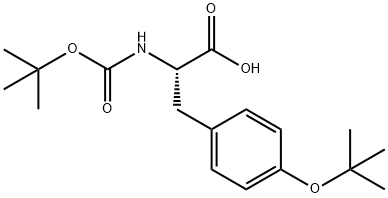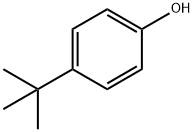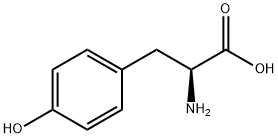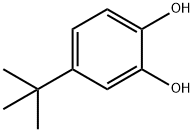Boc-L-Tyr(tBu)-OH
Synonym(s):Boc-O-tert-butyl-L -tyrosine;Boc-Tyr(tBu)-OH;N-α-t.-Boc-O-t.-butyl-L-tyrosine
- CAS NO.:47375-34-8
- Empirical Formula: C18H27NO5
- Molecular Weight: 337.41
- MDL number: MFCD00065598
- SAFETY DATA SHEET (SDS)
- Update Date: 2025-09-25 17:15:13

What is Boc-L-Tyr(tBu)-OH?
Chemical properties
White powder
The Uses of Boc-L-Tyr(tBu)-OH
N-Boc-O-tert-butyl-L-tyrosine is used as pharmaceutical intermediate.
What are the applications of Application
Boc-Tyr(tBu)-OH is an important organic reagent that can be used as a building block for the synthesis of many organic compounds. This compound could be used as a starting material to synthesize TPE-Tyr. TPE-Tyr can undergo covalent crosslinking via the formation of dityrosine linkages by exploiting horseradish peroxidase (HRP)-catalyzed phenol polymerization in the presence of H2O2, thereby activating the AIE process and switching on fluorescence emission of TPE core motif[1].
Synthesis
O-tert-butyl-L-tyrosine (2.00 g, 8.42 mmol, 1.0 equiv.) and di-tert-butyl dicarbonate (2.20 g, 10.10 mmol, 1.2 equiv.) were dissolved in a mixture of THF (15 mL) and NaOH (1 N, 30 mL) and stirred at room temperature for 10 h. THF was removed under reduced pressure, and the pH of residual solution was adjusted to 3.0 with dilute hydrochloric acid and the crude product was extracted by ethyl acetate. The combined organic phases was washed with saturated brine (pH 3.0) and dried over anhydrous Na2SO4. The organic solvent was removed under reduced pressure and dried in a vacuum oven at room temperature overnight, affording (N-Boc-O-tert-butyl)-L-Tyr (Boc-O-tert-butyl-L-tyrosine) as a yellowish solid (2.64 g, 93%)[1].
References
[1] Wang X, et al. Highly Selective Fluorogenic Multianalyte Biosensors Constructed via Enzyme-Catalyzed Coupling and Aggregation-Induced Emission. Journal of the American Chemical Society, 2014; 136: 9890–9893.
Properties of Boc-L-Tyr(tBu)-OH
| Melting point: | 113-118 °C |
| Boiling point: | 484.0±40.0 °C(Predicted) |
| alpha | -15 º (C=1% IN DMF) |
| Density | 1.116±0.06 g/cm3(Predicted) |
| storage temp. | 2-8°C |
| solubility | Soluble in Chloroform,Dichloromethane,Ethyl Acetate,DMSO,Acetone,etc. |
| form | powder to crystal |
| pka | 3.00±0.10(Predicted) |
| color | White to Almost white |
| optical activity | [α]20/D 15.0±1.0°, c = 1% in DMF |
| Water Solubility | Soluble in DMF. Insoluble in water. |
| BRN | 4327336 |
| InChI | InChI=1S/C18H27NO5/c1-17(2,3)23-13-9-7-12(8-10-13)11-14(15(20)21)19-16(22)24-18(4,5)6/h7-10,14H,11H2,1-6H3,(H,19,22)(H,20,21)/t14-/m0/s1 |
| CAS DataBase Reference | 47375-34-8(CAS DataBase Reference) |
Safety information for Boc-L-Tyr(tBu)-OH
Computed Descriptors for Boc-L-Tyr(tBu)-OH
| InChIKey | ZEQLLMOXFVKKCN-AWEZNQCLSA-N |
| SMILES | C(O)(=O)[C@H](CC1=CC=C(OC(C)(C)C)C=C1)NC(OC(C)(C)C)=O |
New Products
Indole Methyl Resin tert-butyl 9-methoxy-3-azaspiro[5.5]undecane-3-carboxylate Boc-His(Boc)-OH 2-CTC Resin 4-Chloro-7-tosy1-7Hpyrrolo[2,3-d]pyrimidine 5,7-Dibromo-1H-indole 2,5-dichloro-N-hydroxy-4,6-dimethylpyridine-3-carboximidamide 2,2-Dimethoxy-7-azaspiro[3.5]nonane hydrochloride 4-chloromethyl-5-methyl-1,3-dioxol-2-one (DMDO-Cl) R-2-BENZYLOXY PROPIONIC ACID 1,1’-CARBONYLDIIMIDAZOLE 1,1’-CARBONYLDI (1,2-4 TRIAZOLE) N-METHYL INDAZOLE-3-CARBOXYLIC ACID 4-((2-hydroxyethyl)thio)benzoic acid 1-(TERT-BUTOXYCARBONYL)-2-PYRROLIDINONE Methyl 6-methylnicotinate 3-Pyridineacrylic acid tert-Butyl carbazate TETRAHYDRO-2H-PYRAN-3-OL 2-((4-morpholinophenylamino) (methylthio) methylene) malononitrile 3-(4-morpholinophenylamino)-5-amino-1H-pyrazole-4-carbonitrile 2,4-dihydroxybenzaldehyde 1,3-Diethyl-1,3-Diphenylurea Methyl 2-methylquinoline-6-carboxylateRelated products of tetrahydrofuran








You may like
-
 Boc-L-Tyr(tBu)-OH >98%View Details
Boc-L-Tyr(tBu)-OH >98%View Details
47375-34-8 -
 N-(tert-Butoxycarbonyl)-O-tert-butyl-L-tyrosine CAS 47375-34-8View Details
N-(tert-Butoxycarbonyl)-O-tert-butyl-L-tyrosine CAS 47375-34-8View Details
47375-34-8 -
 Boc-Tyr(tBu)-OH 95.00% CAS 47375-34-8View Details
Boc-Tyr(tBu)-OH 95.00% CAS 47375-34-8View Details
47375-34-8 -
 Boc-Tyr(tBu)-OH 98% (HPLC) CAS 47375-34-8View Details
Boc-Tyr(tBu)-OH 98% (HPLC) CAS 47375-34-8View Details
47375-34-8 -
 Boc-Tyr(tBu)-OH 98% CAS 47375-34-8View Details
Boc-Tyr(tBu)-OH 98% CAS 47375-34-8View Details
47375-34-8 -
 Boc-Tyr(tBu)-OH CAS 47375-34-8View Details
Boc-Tyr(tBu)-OH CAS 47375-34-8View Details
47375-34-8 -
 Boc-Tyr(tBu)-OH CAS 47375-34-8View Details
Boc-Tyr(tBu)-OH CAS 47375-34-8View Details
47375-34-8 -
 Thiourea 99% ARView Details
Thiourea 99% ARView Details
62-56-6
